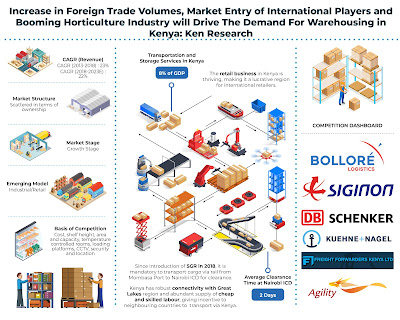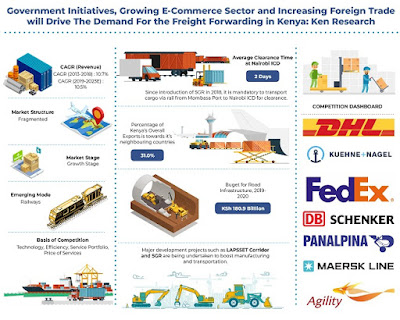“Despite a major supply gap of modern warehouses, the Kenya warehousing market holds immense opportunity for growth.”
Strategic Location: Kenya is the world’s gateway to East Africa and its capital Nairobi is one of the most vibrant international trading hubs in Africa. Mombasa Port is crucial for international trade. Labor availability in neighboring countries such as Uganda is lesser; hence the companies prefer to hold goods in Kenya. A new Lamu Port is under development along with a LAPSSET Corridor, which is expected to further open up Kenya to international trade.
Booming Retail Business: Contrasting to the global trend, the retail business in Kenya is thriving, making it a lucrative region for international retailers. The increasing middle class and urban-educated population have pushed the demand for shopping centers and e-commerce in Nairobi and other urban counties of Kenya. These centers require modern warehousing services.
Demand for Modern Warehousing: Even though the stock of grade C warehouses or godowns has been declining, both demand and supply for grade A and B warehouses have been rising. Notably, Africa Logistics Park has built a modern warehousing facility of Grade warehouses in Tatu City, North Nairobi, and other such facilities are under construction.
Ease of Doing Business: Kenya has a stable political climate and improving infrastructural development. Factors such as these and a number of reforms related to credit access, taxes, construction permits, make Kenya a lucrative destination for new entrants.
Upcoming Warehousing Hubs: Due to over congestion in Nairobi, investors are now moving to lesser expensive regions for buying/renting warehouses. These regions include Eldoret, Thika, Nakuru, Kiambu, Machakos, and Kakamega. With a dry port coming up in Naivasha and Kisumu, the counties are expected to see a hike in warehousing prices.
Analysts at Ken Research in their latest publication “Kenya Warehousing Market Outlook to 2023 – By Closed Normal, Open Yard, Closed Ac and Cold Storage; Contract and Owned Warehousing; Industrial Warehouses, ICD, and Cold Storage” believe that the Warehousing market in Kenya is expected to grow due to increasing foreign trade, market entry of international players and the booming horticulture industry.
Key Segments Covered:-
Warehousing Market
Revenue by End User
FMCG
Horticulture
Retail
Revenue by Type of Warehouse
Closed Normal
Open Yard
Closed Ac
Cold Storage
Revenue by Contract and Integrated Logistics
Contract
Integrated
Revenue by Operation Model
Industrial/Retail
ICD/CFS
Cold Storage/Freezer/Chiller
Warehousing Space by Region
Nairobi
Mombasa
Others (Eldoret, Thika, Nakuru, Kiambu, Machakos and Kakamega)
Key Target Audience
Logistics/Warehousing Companies
E Commerce Logistics Companies
3PL Companies
Consultancy Companies
Real Estate Companies/ Industrial Developers
Time Period Captured in the Report:-
Historical Period: 2013-2018
Forecast Period: 2019-2023
Companies Covered:-
Bollore Transport and Logistics
DB Schenker
Siginon Group
Kuehne Nagel
Agility Logistics
Freight Forwarders Kenya
Key Topics Covered in the Report:-
Kenya Logistics and Warehousing Market
Road Freight Industry Kenya
Contract Logistics Warehousing Market Kenya
Owned Logistics Revenue Kenya
Freight Forwarding Competition Kenya
Kenya Outsourced Logistics Market
Kenya Integrated Logistics Market
Kenya International Warehousing Market
Kenya Logistics Market Players
Future Growth Kenya Logistics Market
Kenya Warehousing Market Revenue USD Billion
Revenue earned by Kenya warehousing companies
Comparison land sea air freight charges Kenya
For More Information, Refer To Below Link:-
Related Reports by Ken Research:-
+91-9015378249



